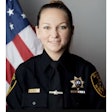Police read the calendar differently than most people. When you see "September," it means school traffic posts. "December" and "November" mean holiday traffic congestion, pickpockets, and shoppers fighting for parking spaces at the mall. And summertime means tourists and the specific criminals who victimize them.
There is a long recognized relationship between tourism and crime. Much of this can be attributed to "vacation behavior," a general carefree attitude that translates into carelessness and leaves the tourist vulnerable. It doesn't help that tourists usually carry large sums of money as well as small, high-priced electronic devices, making them sure targets.
Tourists are also prone to taking risks and visiting locations they would avoid when at home. Those searching for a thrill may wind up in late night spots, often imbibing too much alcohol or other intoxicants. Emboldened by alcohol, they may accept a ride from an unknown party or walk through a deserted part of town. Other tourists are elderly or very young and naïve, and may wind up in a dangerous location due to a lack of knowledge of an area.
Career criminals target tourists for a number of reasons, including those listed above. Criminals also know that tourists may have a hard time contacting authorities and may not know their specific locations. There may be a delay in reporting a crime due to language or cultural barriers. And even if a crime is reported, it is unlikely that the victim will have the time or money to return to testify at trial.
Protecting Profits
You have a very tangible reason for being concerned with crimes against tourists. Besides the typical reason of having sworn to protect, tourism is a huge industry that generates a great deal of income for the local community. In fact, tourism is the second largest service industry in the United States. The 57 million yearly visitors to the United States spend more than $100 billion and support more than 204 million jobs.
One of the most vital aspects of a strong tourist trade is the belief that the visitor will be safe to have a good time. Crimes against tourists can damage a destination's reputation. This problem is exacerbated by the media's often disproportional coverage of tourism crimes. In many areas, the tourist season is short, and over-reporting of crime can kill an entire season.
A true statistical picture of crimes against tourists is hard to determine. Different jurisdictions struggle to define "what is a tourist?" Was the crime perpetrated because of the victim's status as a tourist or would it have occurred anyway? How are statistics about tourism crime maintained? Is a separate report used or a specialized designation assigned to tourist victims?
Be cautious in defining whether the victim is using status as a tourist to cover illicit behavior. There are many stories of tourists who were "robbed" leaving a casino, and then further investigation revealed the tourist was trying to cover a string of bad luck at the blackjack table with a falsified police report. Tourists may use you to cover embarrassing behavior or illegal acts. Theft reports may be filed to account for monies spent on illegal drugs or prostitutes.
Even legal behavior may lend itself to victimization. A tourist's search for a quiet, remote spot may lead to an area deserted by all persons except a predatory criminal. Beaches, overlooks, and parks at night are notorious for this type of crime. You and your agency might want to consider restricting access to certain remote areas after specifc times.
Finding Patterns
The most common type of crime you will see in dealing with tourists is theft. This may include physical assaults, but be aware of scams, credit card fraud, and rip-offs by taxi drivers. With theft being the most common crime, look for commonalities among the victims. Are they local, day tourists, or international visitors? Does it seem like certain age groups are targeted? Was the victim engaging in a behavior that escalated his own vulnerability? Was there something about the victim's actions or dress that distinguished her as a tourist?
In interviewing the victim, try to ascertain a profile of the offender. Did this seem like a random act or was it well planned? Did the offender work alone? Does this type of crime appear to be a specialty of the offender?
Unfortunately, you will have to do much of the legwork to compile statistics about crimes against tourists because the tourism industry is very guarded in releasing crime figures. No tourist entity is anxious to have its name associated with crime. Because of this, many places attempt to handle crime "in-house" with security guards taking a report. Victims assume the report is being forwarded to law enforcement for follow-up investigation, but this may or may not be the case.
Tourism Boards
In fighting crimes against tourists, the good news is there is already an apparatus in place designed to reach out to these people. Many locations have tourism boards designed specifically to lure tourists to a vacation spot. These boards work with local hotels, casinos, and rental car companies to deal with the concerns of travelers. You can work with the tourism board to make brochures with crime prevention tips available to people vacationing in the area. You can also use the tourism board to spread information about how to quickly access police resources.
If many of the tourist victims in an area are international travelers and a language barrier is an issue, you can reach out to the community for volunteer translators who will staff phones or assist you with interviews. Brochures and other documents can be printed in foreign languages to facilitate understanding by the international tourist.
Another problem faced by officers in tourist areas is how to get the traveler to return to testify against an offender. Hawaii has implemented teleconferencing for testimony during trials. In Florida's Dade County, prosecutors began a Victim Fly-Back program to help defray the costs of a victim returning to testify.
Crime Prevention
Make yourself available to local tourist entities to provide talks about what can be done to avoid tourist victimization. You can also conduct safety inspections to see if crime can be reduced by trimming back shrubbery or replacing lights. Also, encourage motels to keep track of who is coming and going from rooms. (See "Patrol Response to Crime at Budget Motels, POLICE, March 2007.)
If one area seems particularly vulnerable to crime, your agency can set up undercover surveillance using plainclothes officers and undercover cars. Specialized officers can be used as decoys dressed as tourists. If an undercover operation is impracticable, cameras can be set up in the area. Or if resources allow, a police substation could be opened in the area just for the season.
Be creative in the type of patrol utilized in tourist areas. Beaches are best patrolled by all-terrain vehicles. Mountainous areas can be patrolled by ATVs, as well as by officers on horseback or mountain bikes. New Orleans police are legendary for their use of horses to control crowds during Mardi Gras. A crowded street scene like Mardi Gras may be best patrolled by officers on bicycles or Segways.
Tourism is a vital part of the U.S. economy. Police are charged with the difficult task of protecting those who are easily identified and careless. This specialized population requires a specialized approach. As the summer tourist season approaches departments need to start thinking of ways to prevent crimes against tourists.















